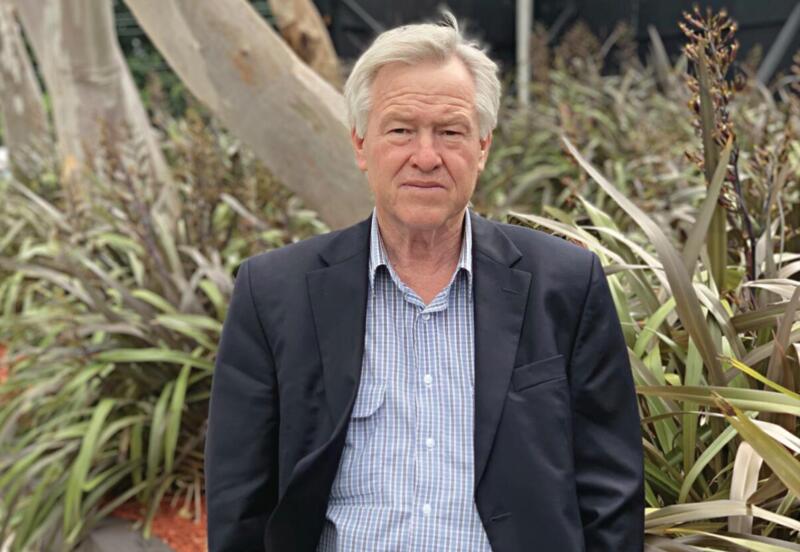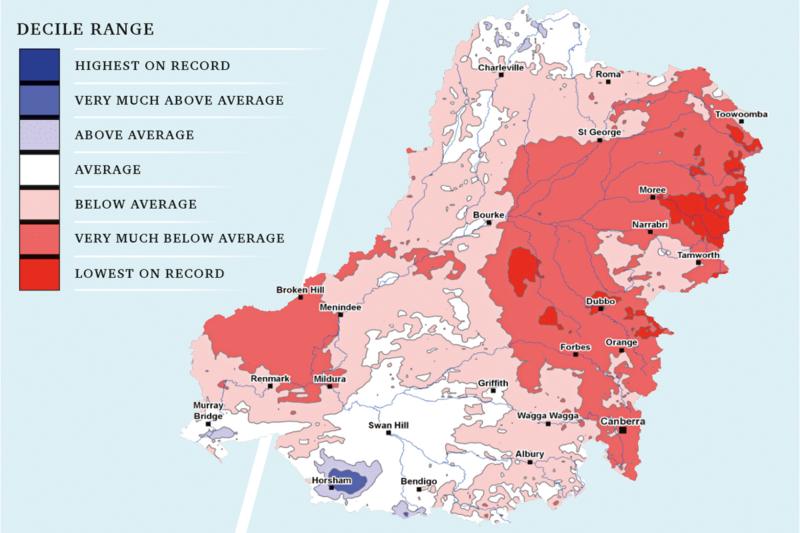MORE than 100mm of rain fell in parts of western NSW in early November, bringing much-needed hope for graziers. But the 24-hour downpour did not detract from the pressing agenda of the state’s water crisis, says Xavier Martin, chair of NSW Farmers’ Water Taskforce.
On 4 November the new taskforce of 13 members from across the state, ensuring a balanced geographic and water source representation, met to plan how they could lobby for government action. It’s not an easy job. NSW Farmers has 17 pages of member water policy diligently developed over decades.
“Right now there’s a window of focus on this issue because of the lack of water in the landscape,” Xavier says. One of the more urgent motions debated at this year’s NSW Farmers annual conference was on policy seeking support for a royal commission into the Murray-Darling Basin Plan (MDBP), and this was also a focus of the taskforce meeting.
“The majority of the membership see so much dysfunction in their valleys that they’re seriously questioning, ‘How did we get to this?’,” says Xavier.
“In spring 2016 there was water flowing everywhere, people were concerned about flooding on the Lachlan and the dams were spilling over. So what is it about these rules and about this plan [MDBP] in three years, arguably even less, we’re having massive fish kills, decline in water surface and groundwater availability and springs disappearing.”
During the taskforce meeting at NSW Farmers’ head office in Sydney, Xavier says WaterNSW presented “scary scenarios” of the future.
 Chair of the NSW Farmers’ Water Taskforce Xavier Martin.
Chair of the NSW Farmers’ Water Taskforce Xavier Martin.
“There will be challenging scenarios likely in the summer and going into autumn, it’s not good. It’s very likely that we’re going to see significant dislocation of ag production whether it’s animals, plants or people involved.”
The Peel River Valley around Tamworth, and the Macquarie River centred around Dubbo are communities of critical concern right now, he explains. “There are a number of other valleys on the cusp of emergency conditions, like the Lachlan.”
Swampland prioritised over regional community water needs
The taskforce is looking closely at the socio-economic ramifications for farm businesses and regional communities, Xavier says. “We’re ramping up and increasing engagement around the debate of environmental water policy to ensure members’ expectations are on the table and lobbying for those outcomes.”
NSW towns in need of water, such as Cowra, recently saw environmental water released for swampland further downstream, which could have sustained the town for an entire year according to the mayor. Xavier says this was a “catastrophic” situation that the taskforce would seek to prevent in future.
RELATED ARTICLES:
Menindee locals share stories on water crisis
Far West graziers thrive despite water security challenges
As the move hit the headlines, Cowra dairy farmer and NSW Farmers’ Dairy Committee chair Colin Thompson told The Daily Telegraph there should be a “moratorium on environmental flows in this crisis” to ensure human needs are prioritised.
.jpg) Colin Thompson at his dairy enterprise, Silvermere Holsteins, in Cowra. Photography Pip Farquharson.
Colin Thompson at his dairy enterprise, Silvermere Holsteins, in Cowra. Photography Pip Farquharson.
The taskforce will continue to lobby for investment for accurate and live monitoring and metering of surface and ground quantity and quality via telemetry. “There are whole zones that are not live monitored right now and reaches of valleys without measurement,” says Xavier, who adds that member policy strongly supports investigations of allocations and over-allocations.
“We’re not metering and monitoring the water enough to manage it well.”
Accurate data is a key priority of the taskforce and crucial to the development of appropriate responses to drought.
“Farmers aren’t just complaining about standing water in wells and bores, there’s also lost water yield [ability to source] into the well. For example what may have been 1,000 litres per hour a year or two ago, they might only have 100 litres per hour. That means 90% of their water for stock and domestic is lost.”
 Soil moisture deficiencies recorded throughout parts of NSW in August 2019. Source: WaterNSW.
Soil moisture deficiencies recorded throughout parts of NSW in August 2019. Source: WaterNSW.
The federal government’s latest drought support package, announced in early November, allows an additional 100 gigalitres of water (minimum of 25 megalitres per applicant) to be made available to farmers along the Murray at a discounted rate, to grow fodder. While NSW Farmers is still seeking more details on this, president James Jackson says moves to provide water to Murray irrigators is a welcome step.
Other areas the taskforce will focus on include an
Australian Competition and Consumer Commission (ACCC) inquiry into water markets, long-term strategies for coastal regions’ water availability and sub-valleys facing extreme soil-moisture deficiencies.
Inflated water prices devastate rural communities
.jpg) The Bullatale Creek in the Deniliquin-district, which is a tributary of the Murray River.
The Bullatale Creek in the Deniliquin-district, which is a tributary of the Murray River.
The ACCC has appointed a commissioner to investigate Murray-Darling Basin water markets and trading, and NSW Farmers has made a submission to the inquiry.
“We’re looking at members’ policy expectations and contemporary dysfunction as prices have skyrocketed affecting one’s ability to access water,” says Xavier. “The pricing is just unheralded.”
RELATED ARTICLES:
Are new dams the answer to NSW water crisis?
The truth about the Murray-Darling
Recent government water infrastructure funding has been welcomed by the taskforce, with qualifications. “Whenever water is reallocated in one part of the valley it impacts another. Just as first flows and last flows are important in streams, the same is for floodplains.”
Water Taskforce key policy focus areas
- A review into the implementation of the Murray-Darling Basin Plan (MDBP).
- ACCC Murray-Darling Basin inquiry into water markets and pricing and developing a NSW Farmers water markets policy.
- Water for the Environment Special Account review, including Independent Assessment of the Social and Economic Impact of the MDBP.
- Increased investment in (real-time telemetry) water monitoring and metering of surface and groundwater by the NSW government to ensure accurate data and improved water management.
- Review of the effectiveness of the Sustainable Diversion Limit Adjustment Mechanism to ensure it’s flexible enough to enable new projects, amendments to existing projects and other complementary measures to be enacted.
- NSW/Victoria review of water management in the Murray system, including a halt in new irrigation development approvals downstream of the Barmah Choke until an audit is carried out.
- Water deliverability, security issues and transparency.
- Water infrastructure, including potential opportunities and priorities.
- Long-term water strategies for coastal regions, including harvestable rights.